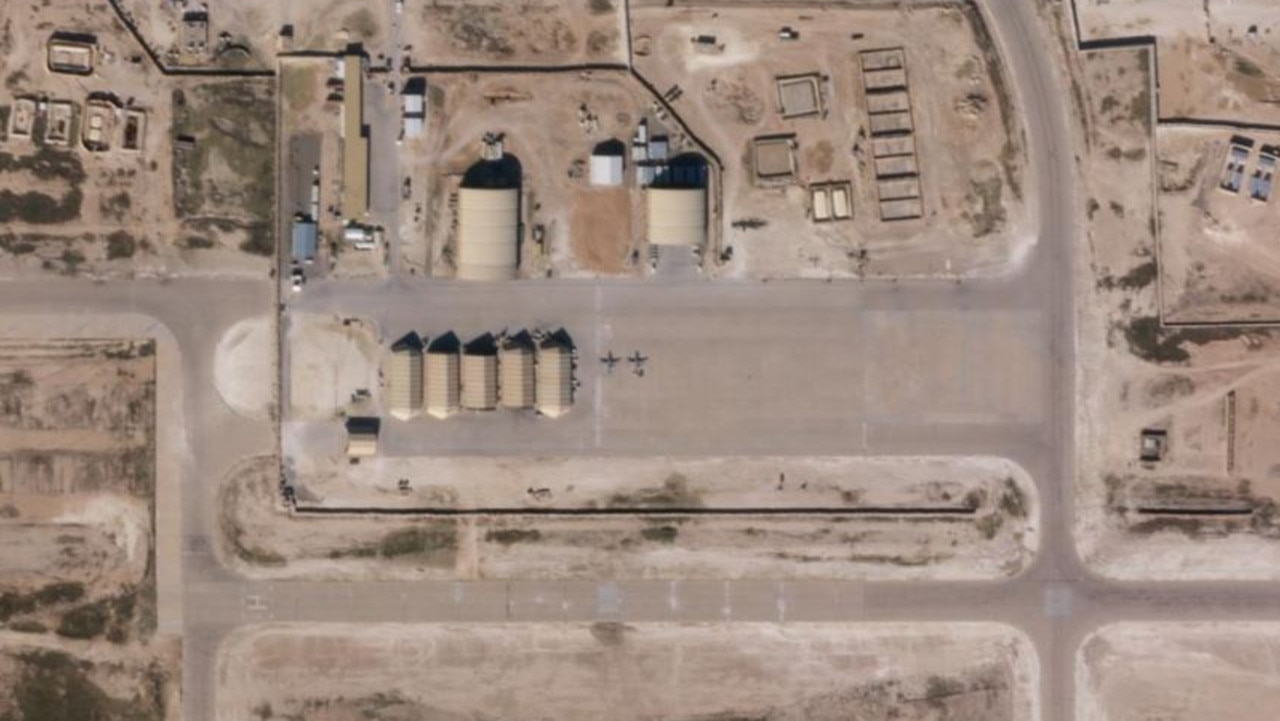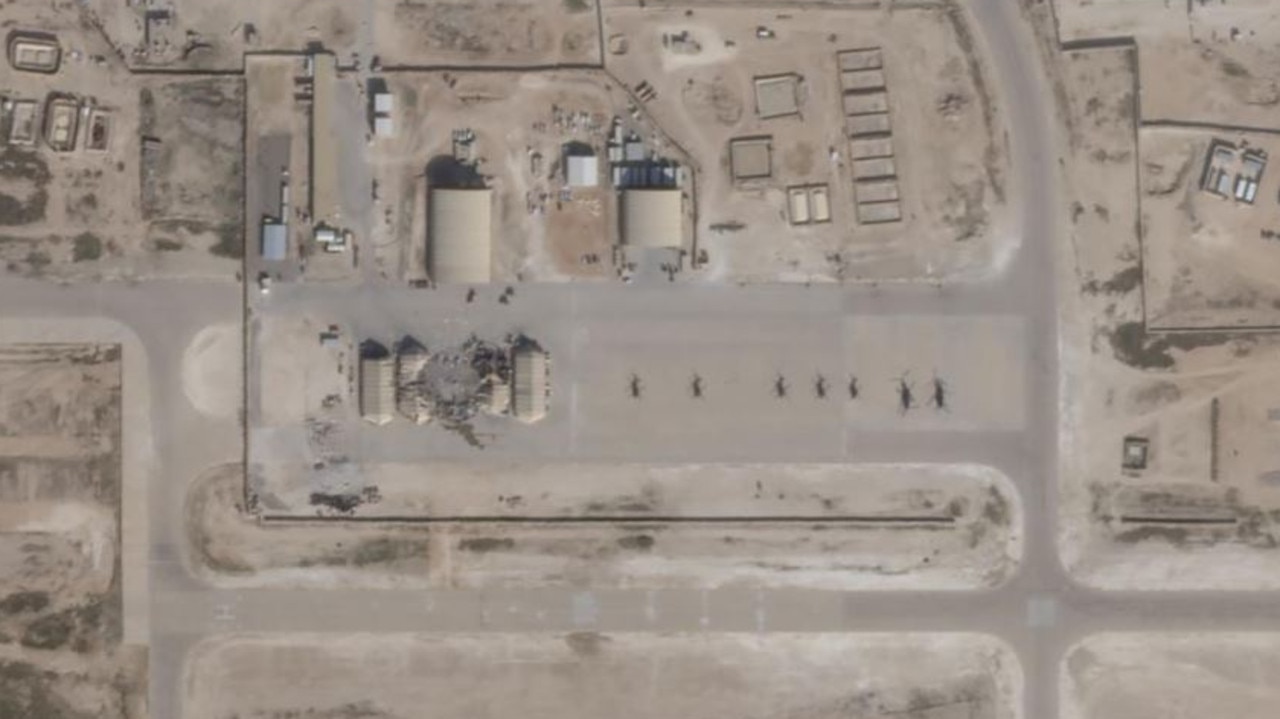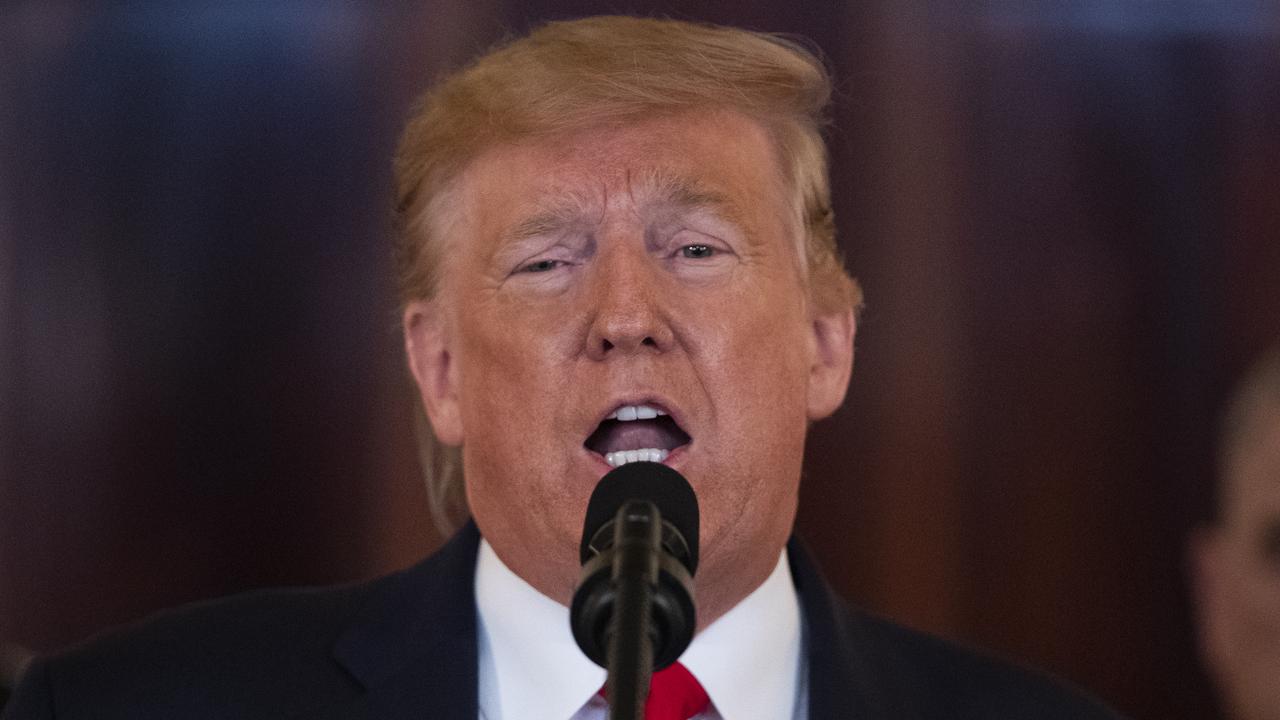Satellite images show damage done to Al Assad Air Base following Iranian missile strikes
Iran may have deliberately missed American targets in Iraq to avoid a major conflict between the two countries, new satellite images suggest.
Iran may have deliberately missed American targets in Iraq to avoid a major conflict between the two countries, US officials have claimed.
Tehran promised a “crushing revenge” strike against the US for the assassination of General Qasem Soleimani, but they only succeeded in damaging structures housing equipment in two air bases in Iraq.
Experts who analysed satellite images of the missile strikes said the Iranians were dead-on in their targets, suggesting Iran deliberately avoided attacking US troops.
SATELLITES SHOW MISSILE STRIKES
Satellite images showed what appeared to be at least five destroyed structures at the Al Asad base.
The images below, courtesy of Planet Labs, show the aftermath of the attacks:


The damaged base facilities appeared to house equipment and aircraft rather than personnel, US radio network NPR reported.
David Schmerler, an analyst at the Middlebury Institute, said: “Some of the locations struck look like the missiles hit dead centre.”
In other words, Iran deliberately meant to avoid striking buildings housing US troops, which would have escalated tensions further.
It remains unknown the exact kind of missiles Iran employed, but Iraqi authorities have found parts of what appear to be Qiam short-range ballistic missiles.
US officials estimated as many as 16 missiles were fired – four of which apparently failed mid-flight.
US OFFICIALS DISPUTE SPECULATION
Joint Chiefs of Staff chairman Mark Milley has disputed the reports, saying he believes Iran did intend on killing American troops.
Mr Milley told reporters at the Pentagon it was his “own personal assessment” that Iran intended to kill US troops.
“The points of impact were close enough to personnel and equipment and so on and so forth. I believe based on what I saw and what I knew that they were attempting to cause structural damage, destroy vehicles and equipment and aircraft, and to kill personnel,” he said.
“All I can tell you is that, factually, they landed at certain points in a populated camp and they did certain amounts of damage, and there were no casualties.
“Why there were no casualties, from my estimation, from what I know now … I think it has to do more with the defensive techniques that our forces uses as opposed to intent.”

Defence Secretary Mark Esper claimed the only reason US troops survived was because of its own military’s early-warning system.
“We had a heads up in the sense that our warning systems and all those things were activated and watching and were able to give us sufficient warning,” Mr Esper told reporters.
Asked if US troops might have been killed without the heads up from the early warning system, Mr Milley replied: “I think that’s a reasonable conclusion, sure.”
HOW MUCH DAMAGE WAS ACTUALLY DONE?
An Iranian presenter initially claimed the missile strikes killed “at least 80 terrorist US soldiers” and also damaged American helicopters, drones and other military equipment.
Ayatollah Ali Khamenei described the strikes as “a slap” and said they were “not sufficient” while vowing further action against the US.
But US President Donald Trump quickly came out confirming the strike didn’t impact American soldiers.
“The American people should be extremely grateful and happy no Americans were harmed in last night’s attack by the Iranian regime,” he said. “We suffered no casualties, all of our soldiers are safe, and only minimal damage was sustained at our military bases.”
He said the Iranian strikes caused only “minimal damage” at the two targeted Iraqi bases.
“Iran appears to be standing down, which is a good thing for all parties concerned and a very good thing for the world,” Mr Trump said. “No American or Iraqi lives were lost because of the precautions taken, the dispersal of forces and an early-warning system that worked very well.”
Iranian Foreign Minister Mohammed Javad Zarif said the attacks were now “concluded”, praising Iran’s “proportionate” response. “We do not seek escalation of war,” he said.
Mr Trump echoed these comments, appearing to signal that he too wanted to de-escalate tensions with Iran.
“We must all work together toward making a deal with Iran that makes the world a safer and more peaceful place,” he said.
US officials say Iran may have intentionally been trying to avoid causing casualties that could drive the US to retaliate with force.
“We could have done it and we didn’t do it,” a State Department official was quoted saying.
The official added the US gave Iran the “opportunity to do what they needed to do and not escalate by killing Americans”.



